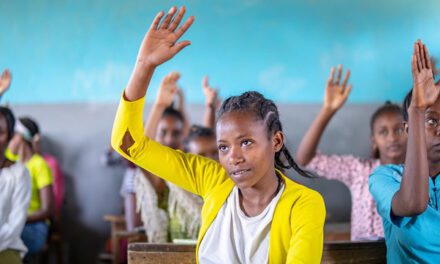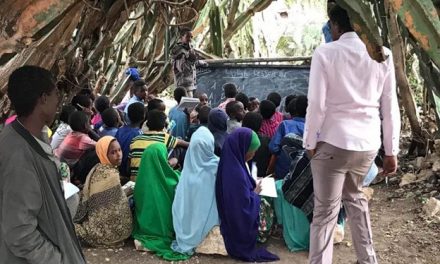In this Education for Climate Justice blog series, we bring you new research, case studies and examples of education for climate action from across the globe. We aim to provoke discussion and encourage learning and collaborations that promote environmental and social justice through new models and practices of education. This series is supported by JustEd at the University of Bath.
This blog was written by: Hannah Hogarth, University of Bath; Professor Mary Brydon-Miller, University of Louisville; Dr Terra Sprague, Research Associate, University of Bath.
In this third instalment of our blog series, we hear from two more projects – one based in the UK and another running in the USA, Australia and newly expanded to the UK. These projects demonstrate ways in which environmental education can extend beyond the walls of the classroom and how students benefit from learning IN nature.
Earlier this year, as part of the Conversations for Change initiative, a Future Creating Workshop took place, both virtually and in-person. Through this methodology, participants have been critiquing, developing a utopian vision and a set of actions to bring about greater Climate Justice within environmental education programming. One of the emergent themes from this work is the need for more opportunities for young people to learn IN nature.
The increasing time spent indoors by children across the globe has led to concerns that children are experiencing a lack of connection with/from ‘nature’. Several factors have led to the decline in time outside, including use of technology and devices, urbanisation, fears for safety, time spent in formal education and reduced play times in schools. Access to safe green spaces to play is a privilege denied to many, despite a broad and diverse body of research that highlighting benefits including improved relationships, positive changes in attitude and behaviour, emotional wellbeing and resilience, improved educational outcomes, physical skills and health and innovation and creativity. There are benefits beyond the human too, with evidence to suggest that children who spend time with non-human nature are more likely to live environmentally.
The multiple environmental and social crises we are experiencing highlights the necessity of a transformation in our relationship with non-human nature. Human/non-human lives and futures are so entangled that it is impossible to think about humans flourishing without considering environmental justice for all. This requires acknowledging the entanglement of humans living affluently with humans facing climate emergencies and environmental degradation, as discussed in the first blog in this series about listening to those most affected by climate change. Post-anthropocentric ideas challenge the nature/culture binary and suggest that humans are part of, not separate from or superior to, nonhuman nature.
Urban forest school
In response to these concerns, educational approaches that seek to increase access to green spaces and human/nonhuman encounters are growing, such as the rise in nature-based programmes, outdoor residentials, forest/beach/farm/river schools, bush kindergartens, outdoor nurseries and schools. Hannah Hogarth has been researching outdoor play and nature relations with young children in an inner-city school in central London. The youngest children at the school (aged 3-5 years old) spend Wednesday mornings visiting an urban park to take part in forest school activities run by an outdoor education charity. Before the sessions could begin Hannah and the outdoor charity volunteers removed litter including broken glass, dog poo and hypodermic needles. The presence of these items, while common in urban green spaces, illustrates the layers of deprivation that exist in cities and highlights the fact that not all green spaces are child-friendly places.
 Over the course of a year, Hannah and the children have played together and researched these relational, embodied experiences culminating in a co-created exhibition in the urban park entitled ‘Stories of Play’. These stories shared many child/nature encounters that are diverse and complex: moments of spontaneous joy throwing leaves in the air or lying under trees listening to baby birds and moments of discomfort due to busy flies, itchy grass or cold hands. These small, seemingly insignificant everyday events demonstrate acts of care and protection that are necessary for multispecies flourishing.
Over the course of a year, Hannah and the children have played together and researched these relational, embodied experiences culminating in a co-created exhibition in the urban park entitled ‘Stories of Play’. These stories shared many child/nature encounters that are diverse and complex: moments of spontaneous joy throwing leaves in the air or lying under trees listening to baby birds and moments of discomfort due to busy flies, itchy grass or cold hands. These small, seemingly insignificant everyday events demonstrate acts of care and protection that are necessary for multispecies flourishing.
Ripple Effects project
Ripple Effects is living up to its name. It started as a project to encourage young people in the Greater Louisville Metro area in Kentucky, USA to use photography to record how they relate to water in our community. Louisville sits on the Ohio River and has extensive rivers and local watersheds that make the area rich in natural beauty, but also prone to flooding. We wanted young people in our area to become more aware of the need to protect and conserve this important local resource.
Bringing together volunteers from a wide variety of local governmental and non-profit organisations, this project has now expanded to include an annual exhibit at the Kentucky State Fair, and this year will include storytellers from the Kentucky Native American Heritage Commission, along with local artists, to engage visitors in reflecting on the past and present importance of water in our community. Ripple Effects-Australia was based on the original project, but took a broader view of the theme of the contest by asking participants to submit photographs that captured something they value in the natural environment, a problem they worry about, or a project that they believe is making a positive difference in addressing local environmental concerns.
This project was funded by local chapters of the Rotary Club and hosted at the State Library of New South Wales in Sydney. The most recent version is being held in South Gloucestershire in the UK, asking local youth to reflect on what makes their communities special. This project is being supported by the Gloucestershire Gateway Trust as part of their on-going efforts to support Asset-Based Community Development in their area. If you’d like to learn more or would like to run your own Ripple Effects contest, feel free to contact Mary Brydon-Miller.
If you are familiar with similar projects that get students outside the classroom to learn about environment and climate change, please leave us a comment below.
You can also read more about our Just and Ambitious Call for action, including our call to ‘encourage learning to also take place outside the formal classroom in green spaces and urban safe spaces’.
——————–
This is the third in the Education for Climate Justice blog series. Others in the series can be read here:
Education that listens to those most affected by climate change
Pedagogies for climate justice: Helping young people be hopeful for the future
Girls and climate justice education: Experience from two initiatives
You can read other content on the UKFIET website relating to climate change and climate justice here, including more about our Conversations for Change event.






